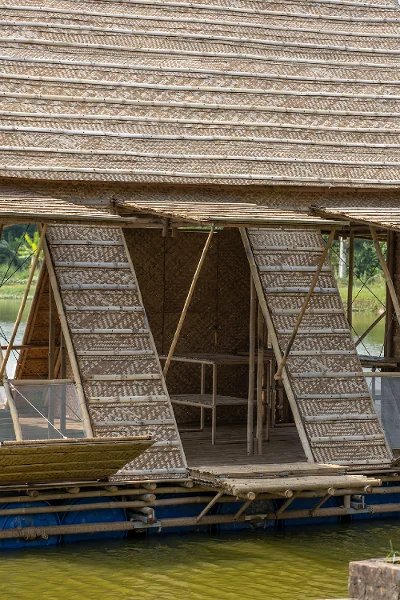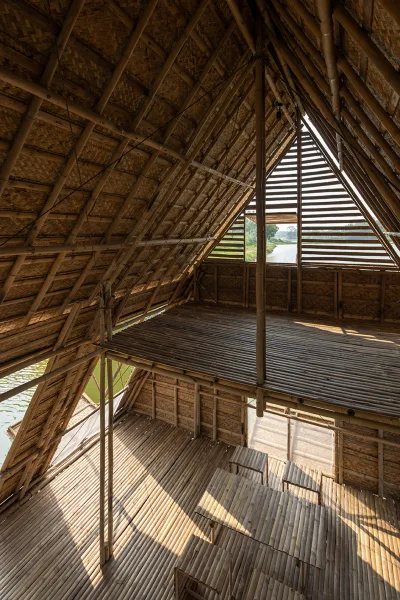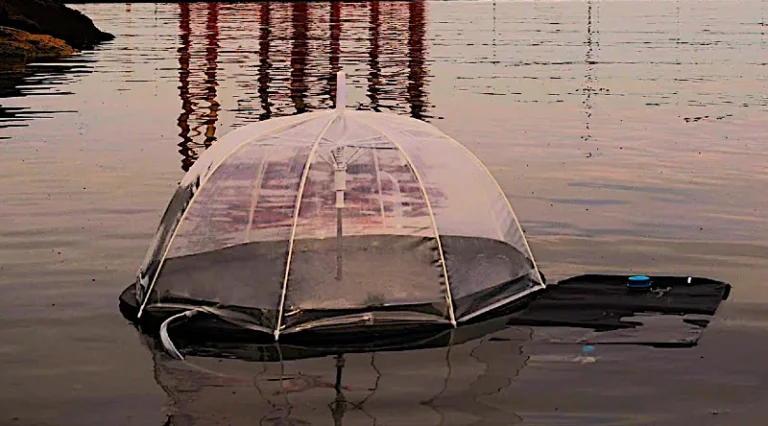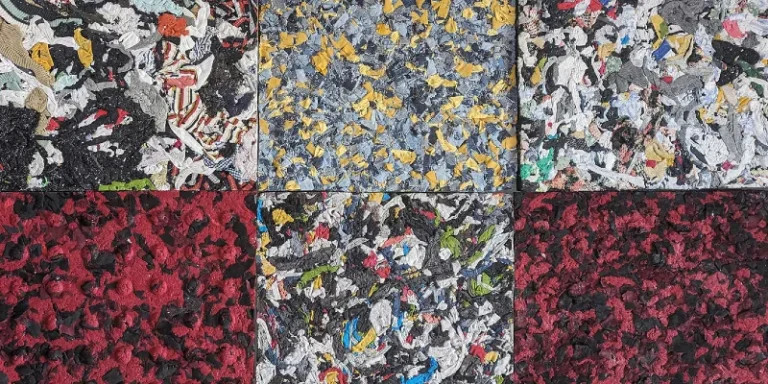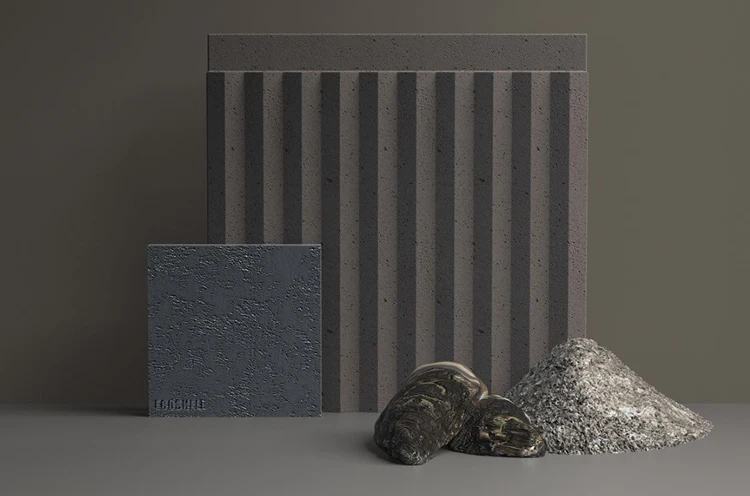In the heart of Vietnam, a revolution brews, not in the streets but on the water. H&P Architects, a visionary Vietnamese studio, unveils its creation, the Floating Bamboo House, more than just a dwelling. It’s a defiance against the relentless rise of sea levels, a beacon of hope for those in the Mekong Delta.
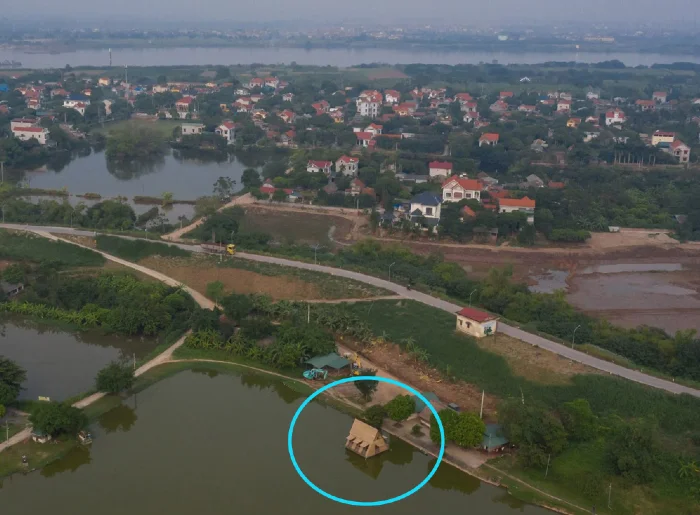
Vietnam’s battle with climate change is no secret. “Vietnam is one of the hardest-hit countries in the world by climate change,” says Đoàn Thanh Hà, the founder of H&P Architects. His voice echoes the urgency for adaptive living solutions. The Floating Bamboo House is a testament to this, offering millions an affordable, stable, and safe accommodation option.
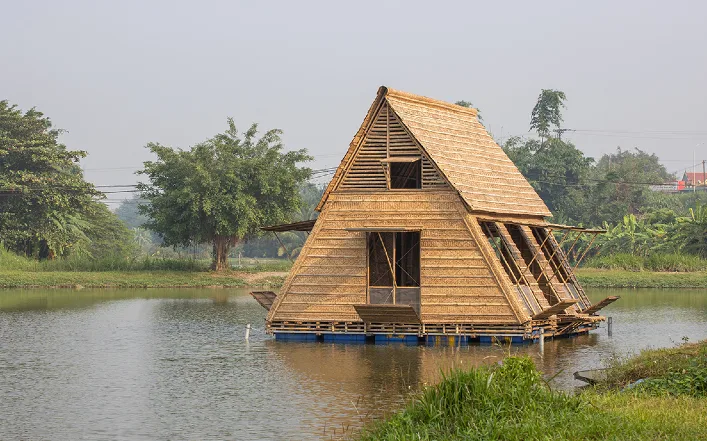
At a modest 516 square feet, this three-compartment home is a marvel of space and design. Its ground floor spans 19 x 19 feet, with the first-floor story neatly tucked in its roof eaves. But it’s not just about size. The design draws inspiration from the Rông House, a symbol of Vietnamese rural architecture, boasting a tall, steep thatched roof.
The materials speak volumes of the project’s sustainability ethos.
Locally sourced bamboo, with a diameter of three to five centimeters, forms the backbone of this house. The facade is a tapestry of bamboo screens, woven sheets, leaves, and corrugated iron – all lightweight and eco-friendly. Underneath, plastic drums give this house its floating capability, a necessary adaptation to rising waters.
H&P Architects envision a future where these homes aren’t just standalone units. Imagine floating communities, interconnected with playgrounds, vegetable rafts, and fish farms. The adaptability extends to the interior too. Floors on the upper story can be removed, transforming the space into a communal hub, be it a library, classroom, or meeting space.
Check out the bamboo-laden interior spaces below:
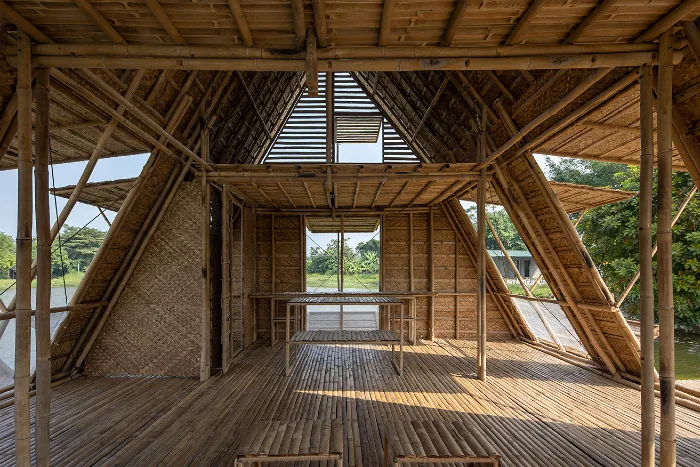
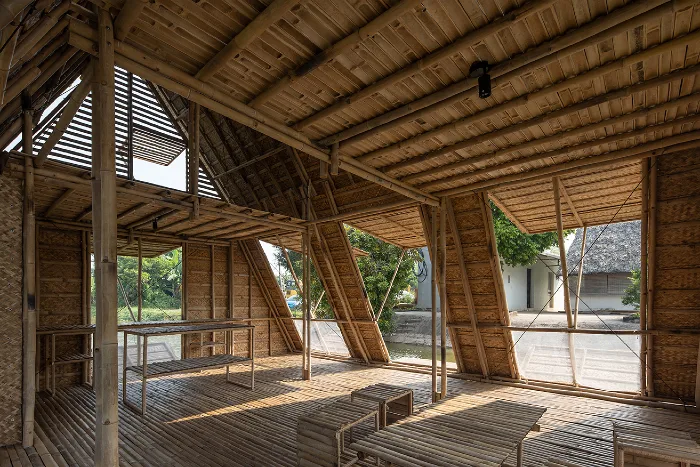
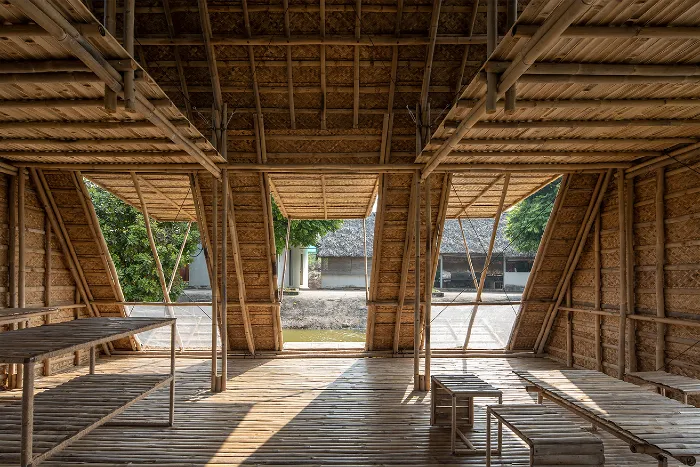
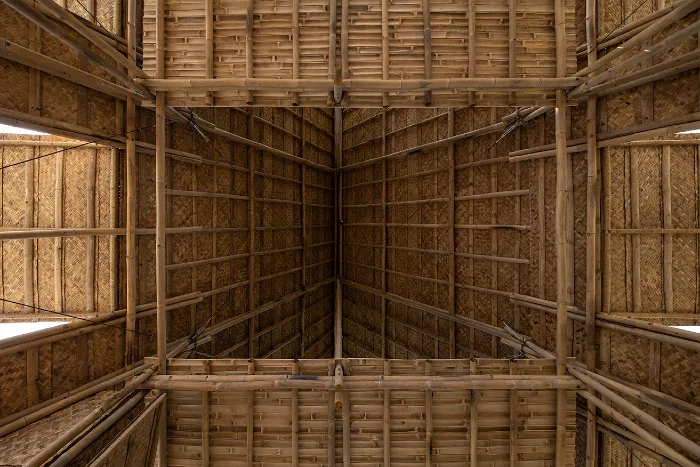
Sustainability: The Core of Floating Bamboo House
But how does this house stand apart in its sustainable promise? Compared to conventional homes, the Floating Bamboo House’s use of bamboo is a game-changer. Bamboo, known for its rapid growth and CO2 absorption, is a super-material in green building. It grows up to 91 cm (35 inches) per day, making it a renewable resource that doesn’t strain the environment.
The house’s small footprint, both physically and environmentally, counters the typical high resource demands of standard housing. By using local materials, it cuts down on transportation emissions and supports local economies. The integration of vegetation and aquaculture not only provides sustenance but also enhances biodiversity, creating a micro-ecosystem.
This house is a symbol of resilience and adaptability. With 70% of Vietnam’s population at risk due to rising sea levels, solutions like the Floating Bamboo House offer a blueprint for a sustainable future. It reminds us that as the waters rise, so must our ingenuity.
More To Discover
- Logitech Tackles Plastic Waste By Switching To Ancient Material
- US Heat Pump Manufacturers Triumph in Cold Climate Challenge, Promising Eco-Friendly Home Heating
- Eating Less Meat Won’t Save the Planet. Here’s the Truth.
- UC Davis Scientists Use Volcanic Rock to Capture Carbon in Dry Climates, Offering New Hope for Climate Action
Meet The Designer: H&P Architects
H&P Architects is based in Vietnam and focuses on sustainability through multiple categories; cultural space, office, residential, hotel, hospital, planning and urban design as well as infrastructure.
Their philosophy is simple, “With H&P Architects, architecture consists of three elements which can not be separated: the Behavior, the Language and the Mind.”








